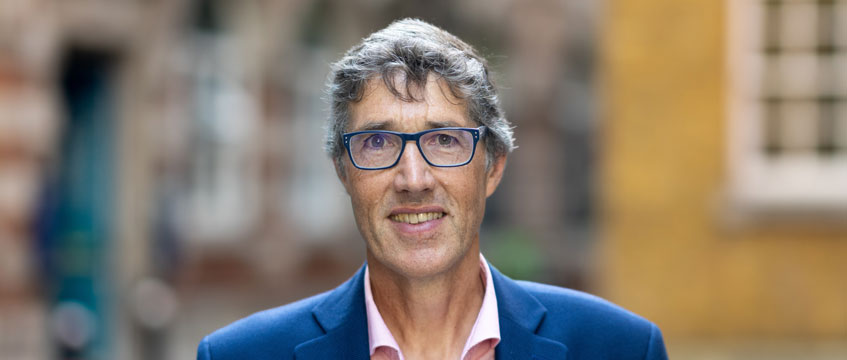COMMENT Commercial centres worldwide are grappling with the long-term impacts of the pandemic, reconfiguring their functions and readdressing the ancillary retail and hospitality industry that supports office-based businesses. While hybrid workers haven’t abandoned the central business district, there’s a need to drive a wider range of people into our commercial centres.
The out-of-the-office experience requires rebalancing to evolve CBDs into destinations of choice. Aspects of home-working, including green spaces and places of reflection, need integrating into the built environment, while the commute needs to become more of an attractive proposition. Public realm will be pivotal to this evolution.
Face-to-face contact is the raison d’etre for cities. Mercantile centres have been built on generations of intelligence sharing, gossiping and interactions only done effectively in-person. To reignite these encounters, public realm can carve out open and green spaces that drive discovery. Also key to creating resilient CBDs will be expanding their functionality. By embracing art, culture and history, centres can bring out unique stories that draw visitors through sense of place.
Time for a reset
Traditionally, green spaces, open areas and cultural assets have been taken for granted. Under pressure to spark a retail revival and meet changing business needs, commercial centres need to reset and enliven their built environment. The pandemic underlined the importance of connecting with nature and it’s no news that lunchtime fresh air boosts afternoon productivity. So how do we provide these opportunities in our commercial centres?
At the Fleet Street Quarter BID, we are spearheading a major public realm transition across more than 106 acres of the City of London. Backed by a £5bn development pipeline that is already well underway, the Fleet Street Quarter is undergoing a radical renaissance. Set to deliver 3m sq ft of commercial space across 34 schemes, developers and investors have placed extraordinary faith in the area. But it’s not just offices. Hotels and student accommodation are also in the pipeline, diversifying the area’s economic base.
To truly capitalise, the Fleet Street Quarter BID needs to connect the dots between these developments to create a comprehensive change. As a BID that is our role. With multiple ownerships and developments, we step in and provide leadership. So in collaboration with Gensler, NRP and UP Projects, we revealed in November a 10-year public realm strategy for our area.
Earmarking 34 potential opportunities for investment, the vision outlines a compelling future for the area, where public realm builds an inclusive, diverse and sustainable district. It maps out an inviting area, where exploration is encouraged through seating, greenery and play facilities – for adults and children.
Curating an exceptional out-of-the-office environment is central to our public realm proposals. To enrich connections in the Fleet Street Quarter, the strategy targets a circa 33,000 sq ft increase in pedestrian space, a doubling of safe cycling routes and 15 new art, play and cultural installations. These targets would reposition pedestrians as primary movers in the area, enhancing journeys from station to office for commuting workers.
Ludgate Circus is an area where the strategy proposes significant change to achieve this. Currently, Ludgate Circus is a crowded junction where vehicular traffic dominates. Under the new proposals, the crossroads would be transformed with safer crossings and public greening. Our ambition is to make Ludgate Circus a destination, like Piccadilly Circus or Oxford Circus. A place to meet and linger, not to dodge traffic and move through quickly.
Widened pavements on Fleet Street and an urban forest at Holborn Circus are also examples that place emphasis on open space. Together, these proposals seek to bolster sociability by galvanising new spaces to sit, talk and reflect.
Capitalising on cultural assets
The Fleet Street Quarter area is blessed with cultural assets, including Sir Christopher Wren’s St Bride’s Church, Bridewell Theatre, Dr Johnson’s House and a legacy as British media’s spiritual home. Celebrating these hidden gems and creating distinctive landmarks can be achieved through placemaking, by reimagining pockets of our past for all ages.
Softening the urban landscape, adding spaces to dwell and spotlighting hidden gems, is a way of repurposing commercial centres. By softening our urban fabric, CBDs can build resilient weekend economies. Our Snowman Trail, celebrating 40 years since the famous Raymond Briggs film hit our screens, attracted multi-generational groups of visitors to Fleet Street in the run-up to Christmas. Transitioning into multi-faceted CBDs that provide beyond task-based nine-to-five functions, will help commercial centres offset hybrid working and drive a retail recovery.
The Fleet Street Quarter BID has laid out what the reinvention of commercial centres could look like. Our strategy provides a framework where public realm delivers a more sustainable and inclusive district for a wider mix of users. The next phase of change lies in creating a hub that blends work and leisure, supports the needs of a broad mix of users and emphasises the importance of open space. There will be challenges ahead, but to quote Dr Johnson “what is easy is seldom excellent”.
Mike Fairmaner is head of placemaking at Fleet Street Quarter BID











